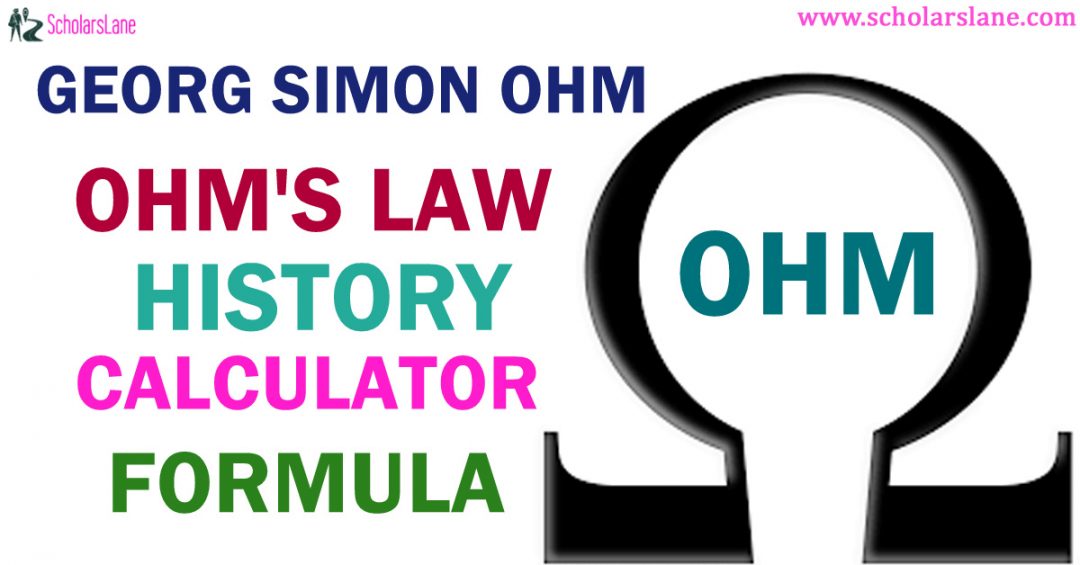Table of Contents
OHM’S LAW
Ohm’s Law states that “If a conductor does not change its physical quantity like temperature, pressure, etc, So the current flowing between two points of the conductor will be directly proportional to the potential difference (voltage) between them ”.
Where, R= Resistance
V= Voltage and I= current
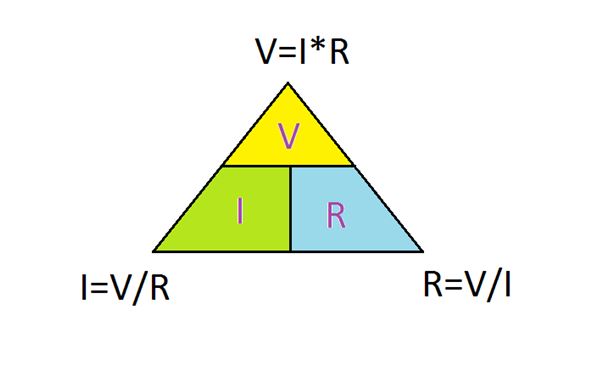
OHM’S LAW EQUATION
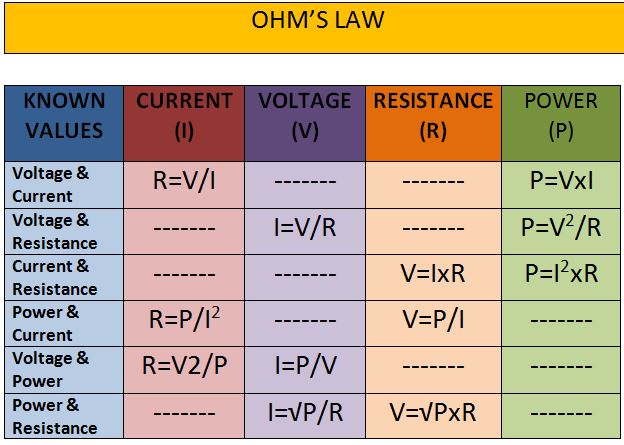
- Where, I is the current flowing through the conductor in the units of ampere. V is the voltage (potential difference) calculated across the conductor in the units of Volt and R is the resistance of the conductor measured in units of Ohm(Ω). According to Ohm’s law the R in this relation is constant, independent of the current.
- The law was given by the German physicist “Georg Simon Ohm”, in 1827, which described measurements of given voltage and current through normal electrical circuits containing different lengths of wire.
- Georg Ohm described his experimental results by a rather more complex equation than the modern form as shown above.
Where J is the Current Density in a resistive material, E is the electric field, and σ (Sigma) is a parameter which depends on a material, called Conductivity.
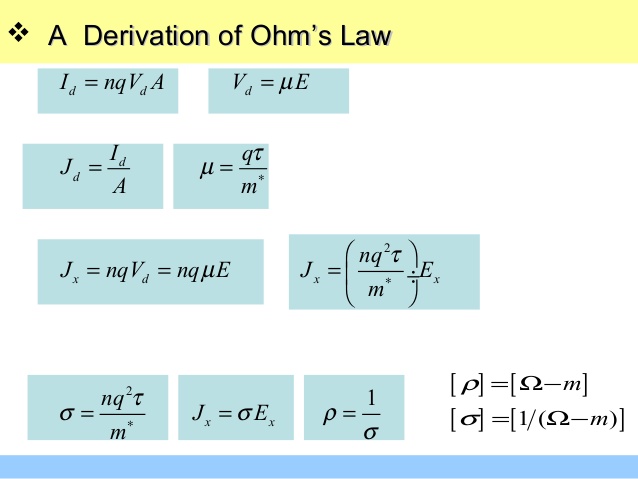
History
Ohm’s Law is the main equation that is used to study electrical circuits. It confines that the potential difference between two points of an electrical circuit equals the product of the current between the same two points and the total resistance of every electrical instrument existing between those same two points. The more the voltage of a battery (its electrical potential difference), the more its current will be. Similarly, if resistance is more, there will be less current.
Georg Simon Ohm was born in Germany, in the year 1787 and entered that city’s university in the year 1805, where he got a doctorate. He taught mathematics in local schools of that city and performed experiments in the physics subject in a school’s physics laboratory, trying to master the principles over electromagnetism. He became a mathematics professor at the Jesuits’ College in Cologne in the year 1817.
In the year 1826, G. Simon ohm published papers giving a mathematical model in the way the electric circuits conducted heat in Fourier’s studies. In May 1827, G. Simon Ohm published “Die galvanische Kette, mathematisch bearbeitet”, which represent the relationship between electromotive force(EMF), current(I), and resistance(R), later it was known as Ohm’s law. Simon Ohm obtained the experimental data by which he first formulated his law on 8 January 1826. But his study got a silent reception over its initial release, and he resigned his position at Cologne, at last taking a new professorship in Nurenberg in the year 1833.
Ohm’s findings would organize new research into electricity in the coming decades. In the year 1841, G Simon Ohm was awarded the Royal Society’s highest award, the “Copley Medal”. The term ‘Ohm’ was adopted as the unit of electrical resistance in the year 1872.
Voltage, Current, and Resistance
- An electric circuit is creating when a conductive path is formed to allow electric charges to continuously move forward. This constant movement of electric charge through the conductors of an electric circuit is known as a current, and it is generally referred to in the terms of “flow”.
- The force given to motivating charge carriers to “flow” in an electric circuit is known as voltage. Voltage is a specific measure of potential energy that is always relative between two points and also known as potential difference. When we talk about a certain amount of voltage being present in an electric circuit, we are mentioning to the measurement of how much potential energy (PE) exists to move charge carriers from one particular point in that electric circuit to another. Without mentioning the two particular points, this term “voltage” has no meaning.
- Current (I) tends to move through the electric conductors with some degree of friction, or in opposite direction to motion. This opposition to motion is known as resistance. The value of current (I) in a circuit depends on the value of voltage (V) and the value of resistance (R) in the electrical circuit to oppose the flow of current. In this way voltage (V), resistance (R) is a quantity relative between two points. Hence, the values of voltage and resistance are usually stated as being “between” or “across” two points in an electric circuit.
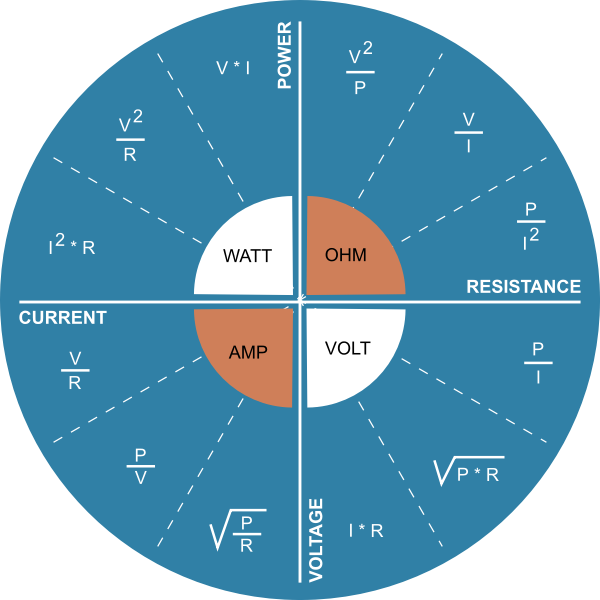
Analyzing general electrical Circuits with Ohm’s Law
Let’s take an example of a simple circuit to understand ohm’s law:
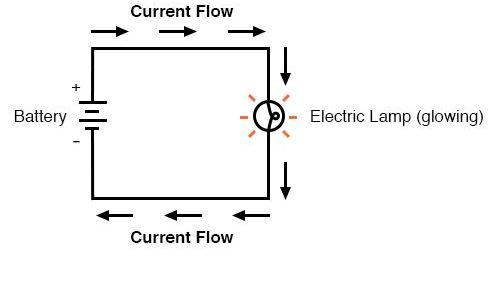
In this electric circuit, there is only one source of voltage (the battery) and only one source of resistance to the flow of electric current (the lamp). This circuit is very easy to understand and apply Ohm’s Law. If we know the amount of any two of the three quantities (voltage, current, and resistance) in this electrical circuit, we can use Ohm’s Law to find the value of the third quantity.
Ohm’s Law calculation
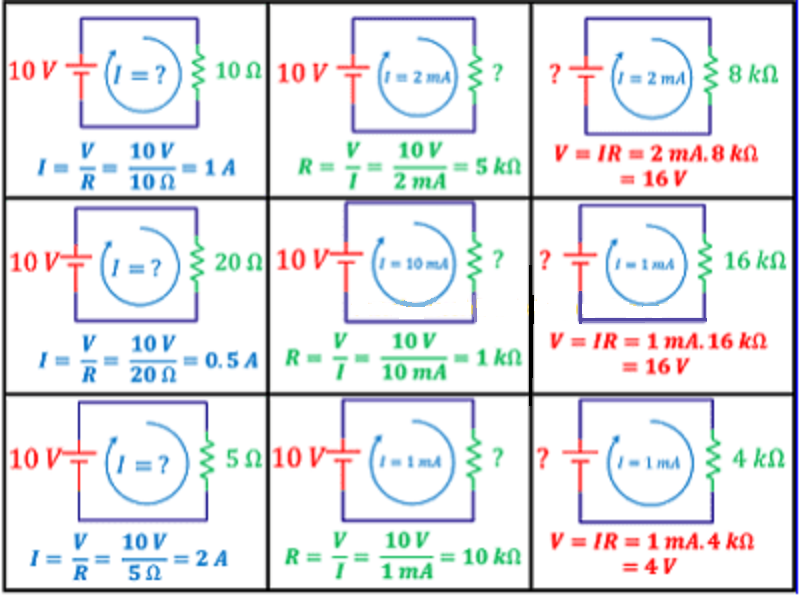
Summary:
- Voltage is measured in Volts, and shown by the letters “V” or “E”.
- Current is measured in Amps, and shown by the letter “I”.
- Resistance is measured in ohms, and shown by the letter “R”.
- Ohm’s Law Relations: V = IR ; I = V/R ; R = V/I
- Try Ohm’s Law Calculator for exact calculation.
For any other query please drop your questions in the comment section below.

